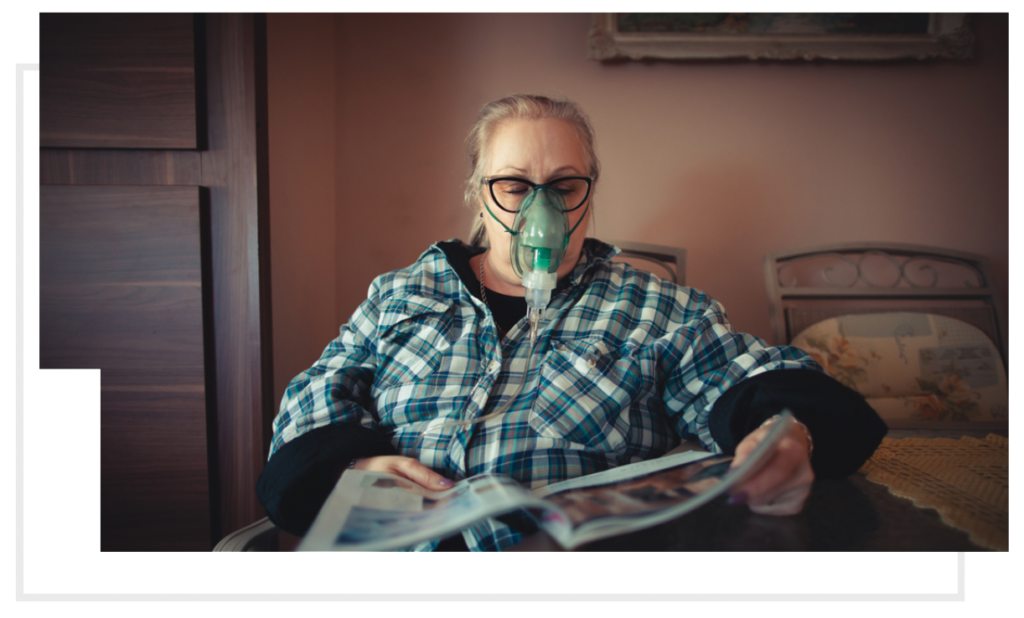
From asthma to lung cancer, respiratory issues affect millions of people around the world every year. We’re proud that scientists who are tackling these critical health problems are able to do so with the help of Castor.
Read this to understand how a randomized double-blind study determined that whole-lund low-dose radiation therapy was unable to improve clinical outcomes in critically ill patients requiring mechanical ventilation for COVID-19 pneumonia. Randomization for this study was performed on the Castor EDC platform.

The morbidity of patients requiring mechanical ventilation for COVID-19 is considerable. This study aimed to gauge the impact of whole-lung low-dose radiation therapy for patients with COVID-19 related pneumonia.
Individuals included in this study were patients admitted to the intensive care unit and required mechanical ventilation for COVID-19 related pneumonia.
Patients were randomized to 1 Gy whole-lung LDRT or sham irradiation (sham-RT). Treatment group allocation was concealed from patients and intensive care unit clinicians, who treated patients according to the current standard of care. Patients were followed for the primary endpoint of ventilator-free days at day 15 post-intervention. Secondary endpoints included overall survival, as well as changes in oxygenation and inflammatory markers.
22 patients were randomized to either whole-lung LDRT
or sham-RT between November and December 2020. Patients were generally elderly and comorbid, with a
median age of 75 years in both arms. No difference in
15-day ventilator-free days was observed between
groups, with a median of 0 days in the LDRT arm and
0 days in the sham-RT arm. Overall survival at 28 days
was identical at 63.6% in both arms. Apart from a more
pronounced reduction in lymphocyte counts after LDRT, analyses of secondary endpoints revealed no significant differences between the groups.
Whole-lung LDRT failed to improve clinical outcomes in critically ill patients requiring mechanical ventilation for COVID-19 pneumonia.
Read this to understand how a randomized controlled trial determined that initiating stabilization of preterm infants at birth with 100% O2 led to higher breathing efforts, improved oxygenation, and a shorter duration on mask ventilation. Infants were randomized for resuscitation with an initial FiO2 of 0.3 or 1.0 using Castor EDC’s platform.

Test the hypothesis that, initiating stabilization at birth with a high O2 concentration, followed by titration, would
improve breathing effort when compared to a low O2 concentration, followed by titration.
Participants were all located in the Netherlands, preterm infants with a gestational age between 240/7 and 296/7 weeks of age.
Infants < 30 weeks gestation were stabilized at birth with an initial O2 concentration of 30 or 100%, followed by
oxygen titration. Primary outcome was minute volume
of spontaneous breathing. We also assessed tidal volumes, mean inspiratory flow rate and respiratory rate with a respiratory function monitor in the first 5 min after
birth, and evaluated the duration of mask ventilation in the first 10 min after birth. Pulse oximetry was used to measure heart rate and SpO2 values in the first 10 min.
Hypoxemia was defined as SpO2 < 25th percentile and hyperoxemia as SpO2 > 95%.
Initiating stabilization of preterm infants at birth with 100% O2 led to higher breathing effort, improved oxygenation, and a shorter duration of mask ventilation as compared to 30% O2, without increasing risks.
SUCCESS

US HQ
175 Varick St.
Ground Floor
New York, NY 10014
USA

EU HQ
George Westinghousestraat 2
1079BA, Amsterdam
The Netherlands
US HQ
175 Varick St.
Ground Floor
New York, NY 10014
USA
EU HQ
George Westinghousestraat 2
1079BA, Amsterdam
The Netherlands